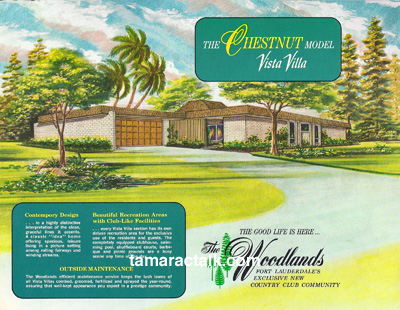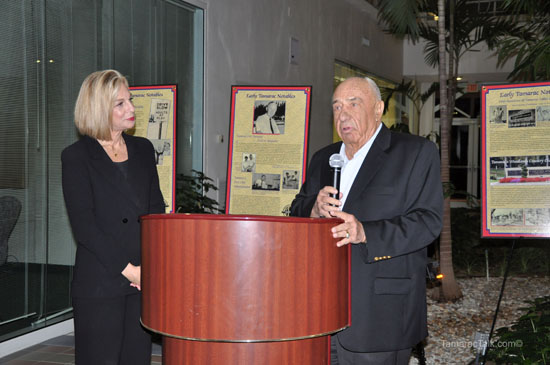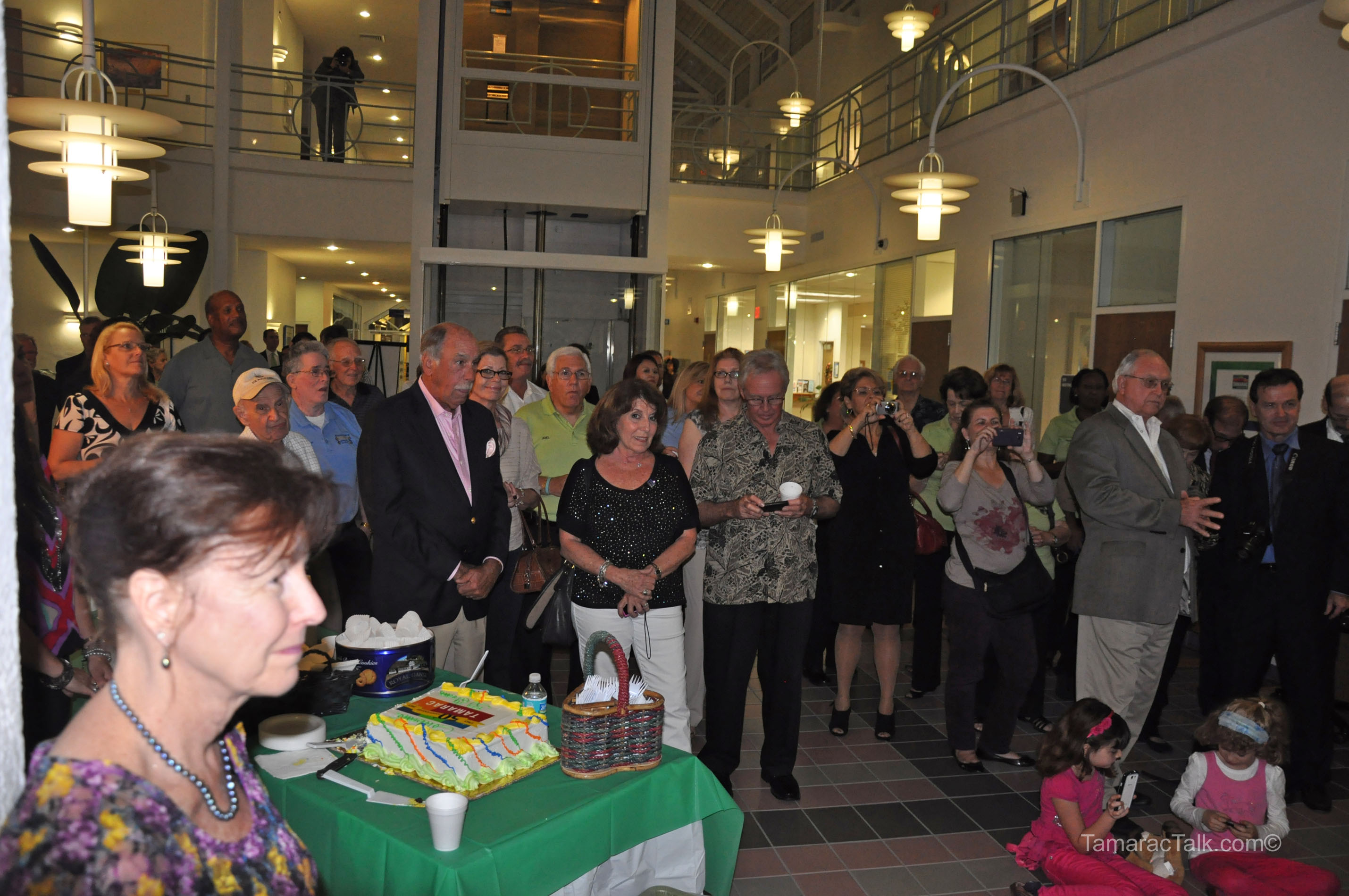The founder of Tamarac was invited to a reception in honor of Tamarac’s upcoming 50th Anniversary, where he was greeted by the Mayor, commissioners, and many of the residents that remember him back from the days he lived in their community.
In 1956, at the age of 28, businessman Kenneth Behring moved to Fort Lauderdale and started the Behring Construction Company. Growing up poor in Wisconsin, he first earned money delivering newspapers, cutting lawns, caddying, and working in a lumberyard and a retail store as a teenager. After high school, he sold used cars and eventually opened his own new and used car dealerships. He was a millionaire at age 27 when he moved to Florida to begin a second career as a real estate developer.
Tamarac was named after a country club in Oakland Park called the Tamarac Country Club. What may have confused many people over the years was that the owners of the club owned a car wash business up north called CarMat. That’s how they got their name. It didn’t have anything to do with Behring, and Behring didn’t name the city after car washes spelled backward.
Behring described the vast open spaces of land back then.
“If you’d been here at that time, there was nothing out here, there was this country club, and that was about the only thing.”

Brochure for the “Chestnut” model featured in the Vista Villas Section of the Woodlands Country Club
Behring was instrumental in adding an interchange connecting his new land west of the Sunshine State Parkway, now known as the Florida Turnpike, in connecting buyers to his new homes. Before 1971, the only way across was through a tunnel which only fit one car at a time.
Behring petitioned the Turnpike Authority to add the interchange at Commercial Boulevard and ultimately had to deed 27.5 acres of prime real estate valued at over $1 million to get the overpass. It opened in November of 1971.
Behring helped build Tamarac Lakes, but his largest communities were the Mainlands, where homes started at $8,900, and the Woodlands Country Club where homes started at $20,000.
Behring lived in The Woodlands for several years with his wife and his children. His custom home still stands today in the Estates section off of Woodlands Boulevard. It now has a gate in front of it, something his son Jeffrey Behring, who lived there as a teenager, mentioned it didn’t have while growing up.
The clubhouses in the communities were very busy during those days, and bingo night was a big night.
“My mother got into going to bingo,” said Behring. “We knew if it was Thursday because every Thursday night I’d call her and say, ‘Will you come over for dinner?’”
‘“Well, I’m tired tonight,’” she’d say, and we knew she was going to bingo.”
Behring moved to California in 1972, where he would develop the Blackhawk development near San Francisco. He said if he had stayed in Tamarac, he would have continued building single-family homes. “I still think that (it)was the finest living that people from the North could get at that time.”
Behring enjoys looking back not only on the homes that he built but on the relationships that he created by bringing people together. He describes his communities as “…a place where they could communicate with people that all had the same problems. But they became friends. They all had the same interests.”
“I remember every New Year’s Eve. I would go to all of the clubhouses. We would have fun. Each would have their own band, and I’d walk in, and they’d play ‘Hail to the Chief,'” he says laughing.
“They were the nicest, most wonderful people that I’ve ever met in my life.”
Before meeting with the Tamarac City Commission and residents to give a speech, Behring reminisced about the many friends he met while living here and his work as a developer.
“I’m more proud, I think, of what we did here in the beginning of anything I’ve done in my life. I think I made more people happy. We gave them an opportunity, at a (great) price, to have something, at that time, which was paradise. They could come and go as they wanted.”
So what has Behring been doing since his days after building Blackhawk in California? Besides owning and selling the Seattle Seahawks football team, Behring contributed $20 million to the Smithsonian Museum of Natural History in 1997, and in 2000 Behring contributed an additional $80 million to rebuild the Smithsonian National Museum of American History.
More importantly, during his years of travel, Behring has made it his personal mission to help those in need. His donations of food, medical supplies, clothing, toys, and educational materials have helped people in some of the most impoverished nations on earth. Not one to sit back at his desk, his first-hand involvement throughout the years has given him a realistic picture of how much help is needed.
Behring founded the Wheelchair Foundation in 2000; since then, more than 850,000 adults, teens, and children in 153 countries in need and have been changed.
Author Profile

Latest entries
 NewsFebruary 20, 2025Colony West Golf Club Seeks Community Input for $3 Million Glades Course Renovation
NewsFebruary 20, 2025Colony West Golf Club Seeks Community Input for $3 Million Glades Course Renovation NewsFebruary 20, 2025Furever Friends Pet Expo Returns to Tamarac with Adoptions, Demonstrations, and Family Fun
NewsFebruary 20, 2025Furever Friends Pet Expo Returns to Tamarac with Adoptions, Demonstrations, and Family Fun NewsFebruary 19, 2025Meet Broward County Animal Care’s Pets of the Week: Lara and Auntie Anne Need Forever Homes
NewsFebruary 19, 2025Meet Broward County Animal Care’s Pets of the Week: Lara and Auntie Anne Need Forever Homes NewsFebruary 18, 2025Temple Beth Torah Sha’aray Tzedek Hosts 2nd Annual Purim Carnival in Tamarac
NewsFebruary 18, 2025Temple Beth Torah Sha’aray Tzedek Hosts 2nd Annual Purim Carnival in Tamarac












